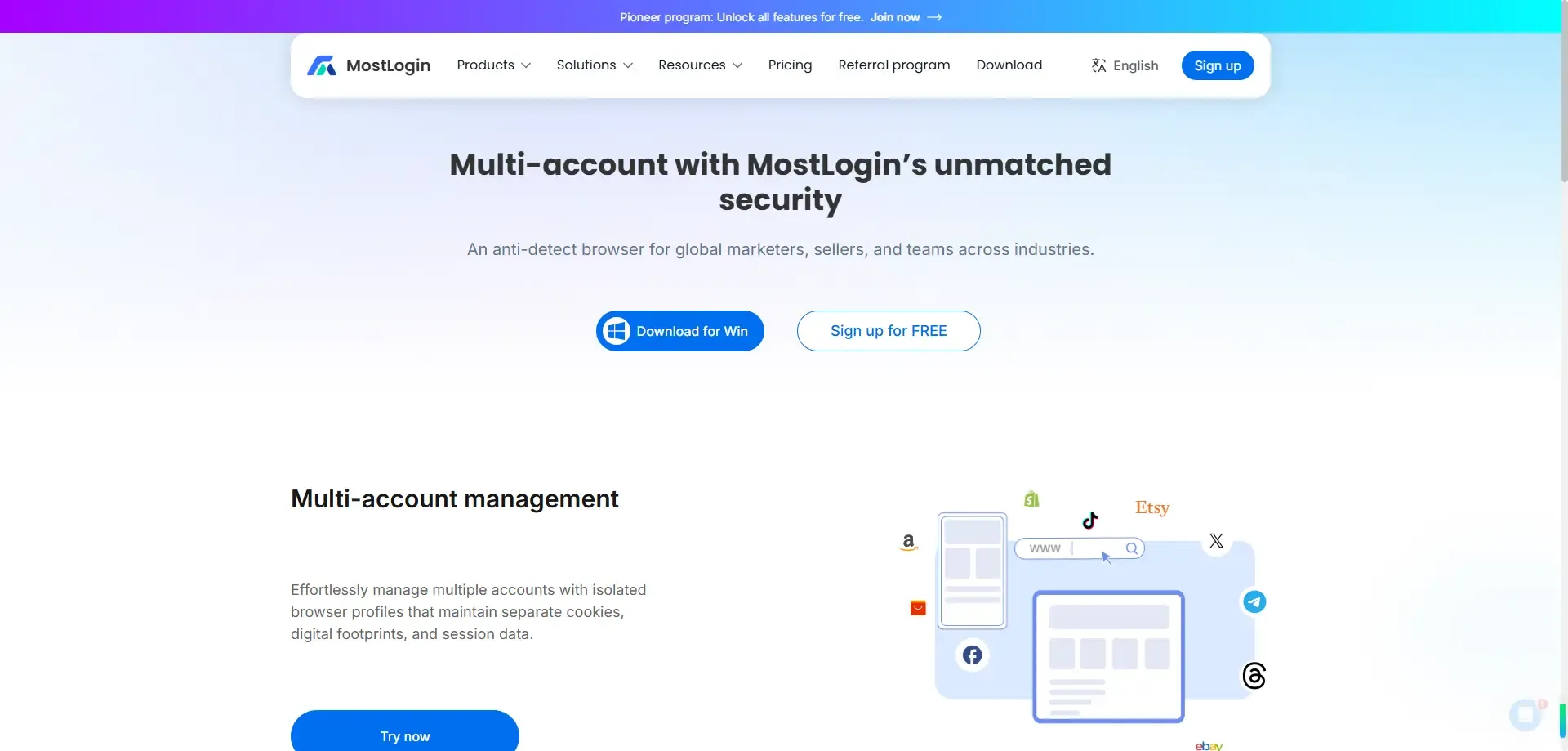Why Do Cross-Border Sellers Need Fingerprint Browsers Even When Using Proxy IPs?


In cross-border e-commerce operations, many sellers use proxy IPs to separate the geographic locations of their accounts and prevent platforms from detecting multiple accounts logging in from the same network. However, relying solely on proxy IPs is not enough—true account isolation also requires device-level disguise, which is exactly what a fingerprint browser offers.
E-commerce platforms such as Amazon, eBay, and Shopee are tightening their risk control measures. They don’t just monitor IP addresses; they also analyze browser fingerprints, including your operating system, screen resolution, fonts, time zone, Canvas data, WebGL parameters, and more. Even if you change your IP address, identical fingerprints can still reveal that the accounts are operated from the same device, triggering restrictions or bans.
Example:
You assign different proxy IPs from the US and UK to two store accounts. Despite the geographic variation, if both accounts are accessed using the same browser environment and device, the platform can still link them as being controlled by the same person.
This is where fingerprint browsers become essential. They allow you to hide and modify your device fingerprint, adding a deeper layer of identity protection. But why do you still need a proxy even when using a fingerprint browser? This article will explain.
What Is a Proxy IP?
A proxy IP acts as an intermediary between your real IP and the target website. Instead of exposing your actual IP, your requests are routed through a proxy server. It's like wearing a mask online—appearing to the website as if you’re someone else.
Common types of proxies:
| Type | Description | Use Case |
|---|---|---|
| HTTP Proxy | Supports basic web browsing | General web access |
| HTTPS Proxy | Secure, encrypted data transfer | E-commerce, social platforms |
| SOCKS5 Proxy | Supports all protocols, fast and secure | Scraping, automated login systems |
| Residential IP | Real household IPs, hardest to detect | Cross-border e-commerce, ads |
| Datacenter IP | From hosting centers, cheap but detectable | Testing, mass operations |
How to Choose the Right Proxy IP?
There is no one-size-fits-all solution—it depends on your needs:
✅ Need stability? Use residential IPs for high trustworthiness and long-term use.
✅ Need cost-effectiveness? Choose datacenter IPs for frequent changes and automation.
✅ Need anonymity? Use high-anonymity (elite) proxies to prevent real IP leakage.
✅ Doing cross-border business? Choose IPs that match your target country for account compliance.
Why Fingerprint Browsers Need Proxies
Fingerprint browsers (e.g., MostLogin, Multilogin, AdsPower) are designed to simulate different virtual browser environments. They help:
Avoid account linking
Simulate real user behavior
Improve account survival rates
However, if all those profiles still use the same public IP, the platform may detect and link the accounts. That’s why proxy IPs are essential.
Proxy + Fingerprint Browser = The Ultimate Anti-Ban Setup
The fingerprint browser handles device disguise
The proxy IP masks your network identity
Only by disguising both can you fully avoid detection.
Benefits of Combining Proxy IPs and Fingerprint Browsers
When used together, they provide enhanced anonymity and security. The fingerprint browser simulates isolated environments so that each account appears to come from a unique device—even if you're using the same physical computer. This is why so many cross-border e-commerce sellers rely on this setup.
On the other hand, using the same IP for all accounts—even with different fingerprints—can still cause trouble. A good proxy service is just as crucial. Assigning a unique IP to each account helps improve separation and enables safe, global multi-account operations.
A powerful and easy-to-use fingerprint browser is the final piece of the puzzle. MostLogin, for example, stands out with its flexible fingerprint customization and proxy integration. It allows you to securely manage multiple identities across platforms like social media and e-commerce—quickly and efficiently.

Practical Tips
Choose a trusted proxy provider to avoid reused or flagged IPs.
Assign a unique proxy to each browser profile.
Rotate IPs regularly to simulate dynamic network behavior.
Never log into different accounts from the same IP address.
Final Thoughts
For cross-border e-commerce sellers, proxy IPs are only the surface disguise—fingerprint browsers are the deep-level camouflage. Only by using both can you achieve true account isolation and long-term operational stability.
🛡️ If you’re struggling with bans, linkage risks, or operational inefficiencies, try combining proxy IPs + fingerprint browsers—a must-have toolkit for efficient digital commerce today.
🚀 Take control of your multi-accounting today
Start managing your accounts more secure and more efficient with MostLogin


